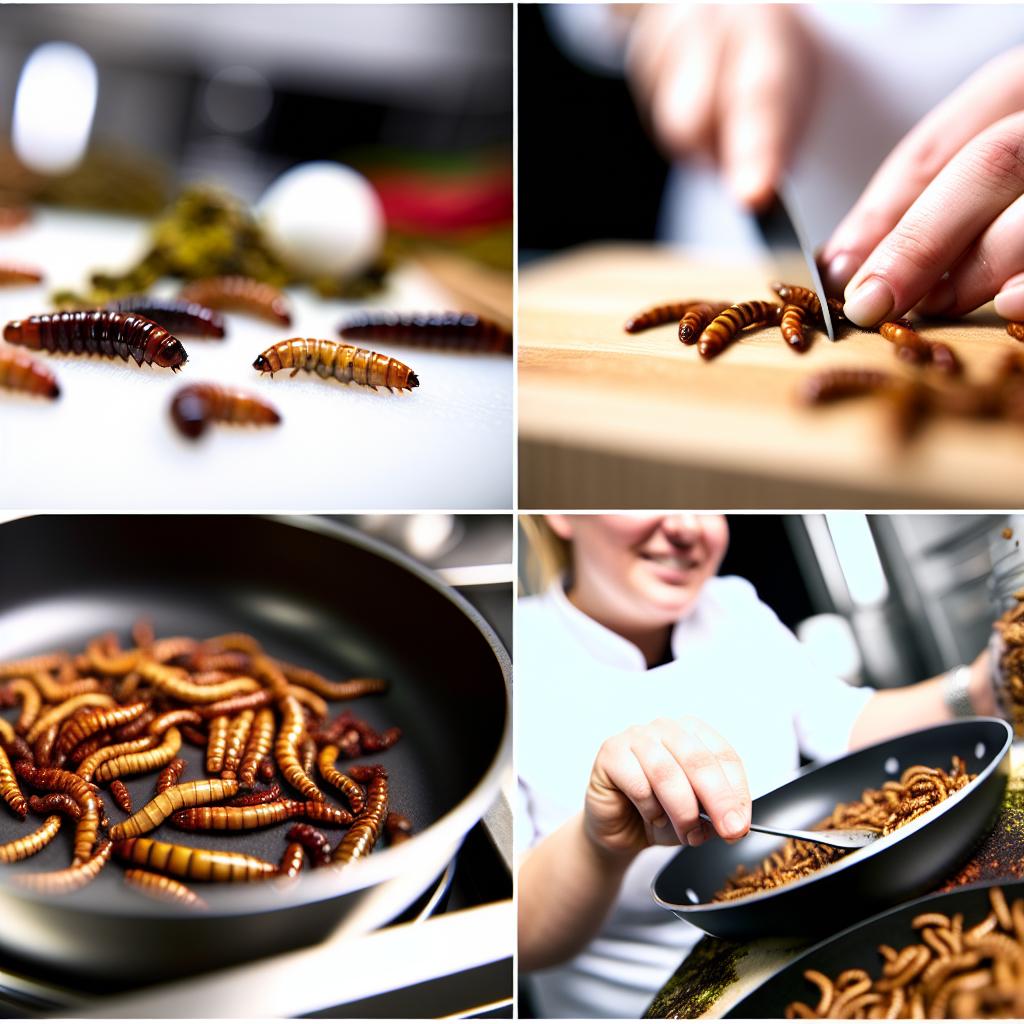Introduction to Mealworms in Culinary Dishes
In recent years, mealworms, the larval stage of the mealworm beetle, have emerged as a noteworthy ingredient in the culinary landscape. As global awareness about sustainable eating practices and alternative protein sources increases, mealworms offer a promising solution for those looking to enhance the nutritional content of their meals while reducing their environmental footprint. By examining the nutritional value, incorporation in various cuisines, health benefits, and sustainability of mealworms, it becomes evident why these larvae are becoming a staple ingredient in many innovative culinary ventures.
Nutritional Value of Mealworms
One of the primary reasons mealworms have captured the interest of the culinary world is their high nutritional content. Mealworms are an excellent source of protein, with approximately 20 grams of protein per 100-gram serving, making them comparable to traditional animal-based protein sources such as chicken and beef. Beyond their protein content, mealworms are abundant in essential vitamins and minerals. Notably, they are rich in vitamin B12, which is vital for nerve health and the formation of red blood cells. Additionally, their significant levels of iron and zinc contribute to functions such as oxygen transport and immune system support.
Moreover, mealworms boast a favorable lipid profile. Unlike some conventional meats that contain higher levels of saturated fats, mealworms predominantly consist of unsaturated fats. These healthy fats are known to support heart health by reducing cholesterol levels and lowering the risk of cardiovascular diseases. As such, mealworms are an attractive addition to dietary regimens focused on balanced and nutritious diets.
Incorporation in Various Cuisines
The versatility of mealworms allows them to be incorporated into a vast array of culinary traditions, accommodating varied tastes and textures. Their mild flavor profile enables them to blend seamlessly with diverse ingredients, offering chefs an expansive canvas to experiment with both sweet and savory dishes.
Western Cuisine
In Western cuisine, mealworms are often ground into a fine flour-like consistency, providing an innovative alternative to traditional grain flours. This mealworm flour has gained traction in the baking industry. It allows the creation of protein-enriched baked goods such as breads, muffins, and cookies, appealing to consumers who prioritize protein intake in their daily diets. Similarly, mealworm-based products like burgers and pasta are becoming increasingly popular. These products offer a sustainable, high-protein substitution for conventional meats and pasta, aligning with dietary trends focused on sustainability and health-consciousness.
Eastern Cuisine
The culinary use of mealworms is not a novel concept in several Asian countries, where they have traditionally been consumed as a crunchy, fried, or roasted snack. However, recent trends show a growing interest in integrating mealworms into more complex dishes. In Eastern cuisine, they add nutritional value and a unique texture to stir-fries and rice bowls, harmonizing with ingredients like vegetables, herbs, and sauces. This application highlights how mealworms can be adapted to both preserve cultural culinary traditions and innovate new gastronomic experiences.
Health Benefits and Sustainability
Incorporating mealworms into the diet offers health advantages beyond their immediate nutritional contributions. Their high density of nutrients like vitamin B12, iron, and zinc supports essential bodily functions, which is particularly beneficial in regions where deficiencies in these nutrients are prevalent. By improving dietary diversity with mealworms, individuals can address specific nutritional needs in their meals.
From an environmental perspective, mealworms contribute to more sustainable food production systems. The farming of mealworms requires substantially less land and water than traditional livestock production, such as beef or pork. Moreover, mealworms have a high feed conversion efficiency, meaning they require less feed to produce an equivalent amount of protein. This efficiency results in reduced waste and a minimal carbon footprint, essential factors in combating climate change and promoting sustainable development in agriculture.
Conclusion
The shift towards incorporating mealworms into culinary dishes is emblematic of an evolving food culture that embraces nutritional benefits without compromising sustainability. As more consumers and culinary professionals recognize the potential of mealworms as a modern building block of dietary innovation, their presence in both home kitchens and restaurant menus is expected to expand. By embracing mealworms, individuals not only diversify their protein sources but also endorse practices that align with environmental conservation efforts. Whether baked into a high-protein loaf of bread, stirred into a rice dish, or transformed into a deliciously savory burger, mealworms promise a rewarding experience for both the palate and the planet.
For those eager to delve deeper into the culinary applications of mealworms, a wealth of resources provides step-by-step recipes and insights into their preparation. Exploring these resources empowers cooks and chefs alike to experiment creatively and sustainably in the kitchen.

